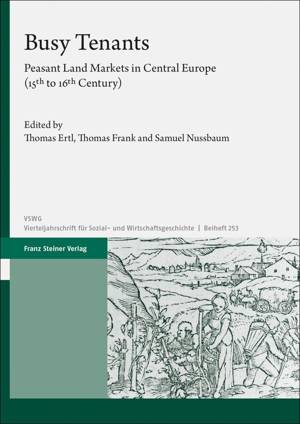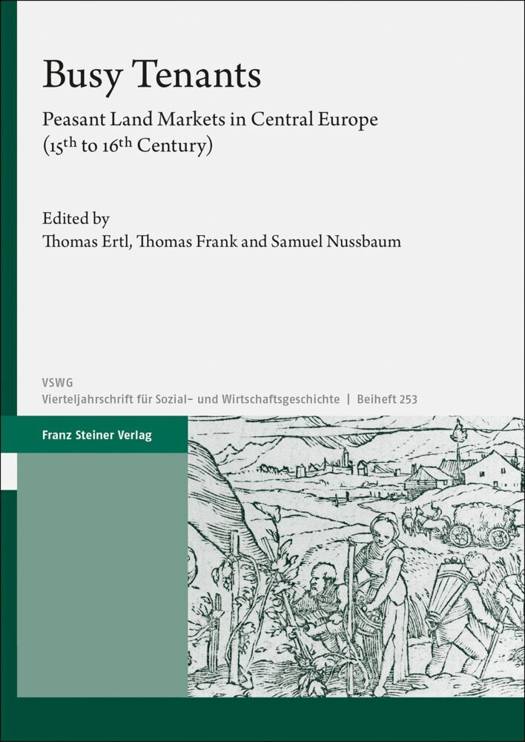
- Afhalen na 1 uur in een winkel met voorraad
- Gratis thuislevering in België vanaf € 30
- Ruim aanbod met 7 miljoen producten
- Afhalen na 1 uur in een winkel met voorraad
- Gratis thuislevering in België vanaf € 30
- Ruim aanbod met 7 miljoen producten
Zoeken
Busy Tenants
Peasant Land Markets in Central Europe (15th to 16th Century)
€ 172,95
+ 345 punten
Omschrijving
Pre-modern commercialisation and a long-term decrease in transaction costs are not only mirrored in the expansion of goods markets but notably in the development of factor markets. Medieval markets for rural land and credit have been addressed systematically with a focus on Western Europe, but to a far lesser extent for Central European regions. The contributions in this volume examine tenure and circulation of rural properties in Central Europe with a focus on the 15th and 16th centuries, combining an in-depth analysis of selected case studies north and south of the Alps and a discussion within the broader picture of the research on pre-modern land markets. The comparison between four Austrian, one Czech, one South-Tyrolian and one Italian case study aims to determine the elements which prove relevant, decisive, or obstructive to the tenant's agency and the development of flexible land markets. The case studies address different methodological issues and specific regional features and in summary, reveal active rural land markets in Central Europe in the 15th and 16th centuries. The mobility of rural properties thrived in an institutional framework that in economic history research has mostly been associated with stability and a lack of dynamism.
Specificaties
Betrokkenen
- Uitgeverij:
Inhoud
- Aantal bladzijden:
- 259
- Taal:
- Engels
- Reeks:
- Reeksnummer:
- nr. 253
Eigenschappen
- Productcode (EAN):
- 9783515130226
- Verschijningsdatum:
- 19/05/2021
- Uitvoering:
- Hardcover
- Formaat:
- Genaaid
- Afmetingen:
- 170 mm x 239 mm
- Gewicht:
- 589 g

Alleen bij Standaard Boekhandel
+ 345 punten op je klantenkaart van Standaard Boekhandel
Beoordelingen
We publiceren alleen reviews die voldoen aan de voorwaarden voor reviews. Bekijk onze voorwaarden voor reviews.










